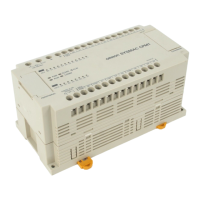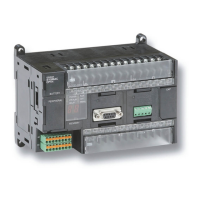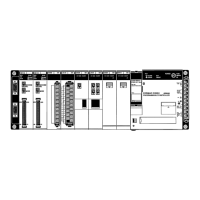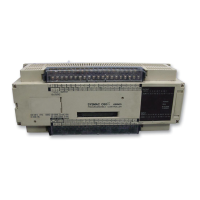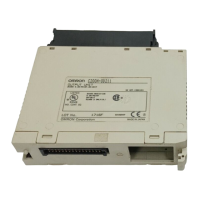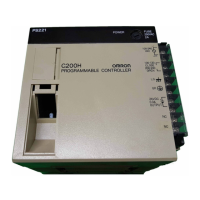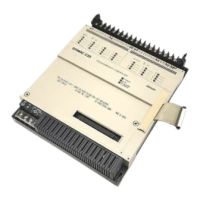1-1SectionCPM2A Features and Functions
4
When used as pulse plus direction or up/down pulse outputs, there can be just
one output with a frequency range of 10 Hz to 10 kHz.
High-speed Input Capabilities for Machine Control
There are four inputs used for interrupt inputs (shared with quick-response in-
puts and interrupt inputs in counter mode) with a minimum input signal width of
50 µs and response time of 0.3 ms. When an interrupt input goes ON, the main
program is stopped and the interrupt program is executed.
There are four inputs used for quick-response inputs (shared with interrupt in-
puts and interrupt inputs in counter mode) that can reliably read input signals
with a signal width as short as 50 µs.
The input time constant for all inputs can be set to 1 ms, 2 ms, 3 ms, 5 ms,
10 ms, 20 ms, 40 ms, or 80 ms. The effects of chattering and external noise can
be reduced by increasing the input time constant.
Other Functions
The interval timer can be set between 0.5 and 319,968 ms and can be set to gen-
erate just one interrupt (one-shot mode) or periodic interrupts (scheduled inter-
rupt mode).
There are two controls on the CPU Unit that can be turned to change the analog
settings (0 to 200 BCD) in IR 250 and IR 251. These controls can be used to eas-
ily change or fine-tune machine settings such as a conveyor belt’s pause time or
feed rate.
The built-in clock (accuracy within 1 minute/month) can be read from the pro-
gram to show the current year, month, day, day of the week, and time. The clock
can be set from a Programming Device (such as a Programming Console) or the
time can be adjusted by rounding up or down to the nearest minute.
TIML(––) is a long-term timer that accommodates set values up to 99,990 sec-
onds (27 hours, 46 minutes, 30 seconds). When combined with the SECONDS
TO HOURS conversion instruction (HMS(––)), the long-term timer provides an
easy way to control equipment scheduling.
The PID(––) instruction can be used with an Analog I/O Unit to control analog
I/O.
Complete Communications Capabilities
A Host Link connection can be made through the PC’s RS-232C port or Periph-
eral port. A personal computer or Programmable Terminal connected in Host
High-speed Interrupt
Input Function
Quick-response Input
Function
Stabilizing Input Filter
Function
Interval Timer Interrupts
Analog Settings
Calendar/Clock
Long-term Timer
Analog PID Control
Host Link
